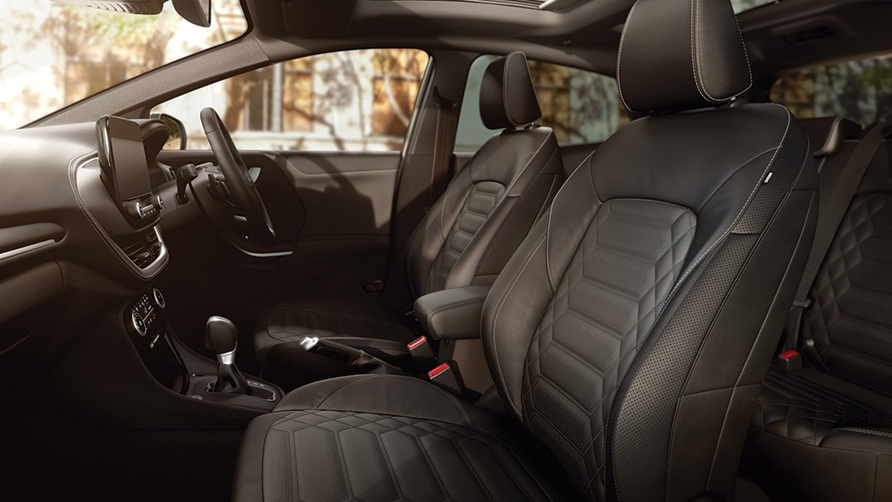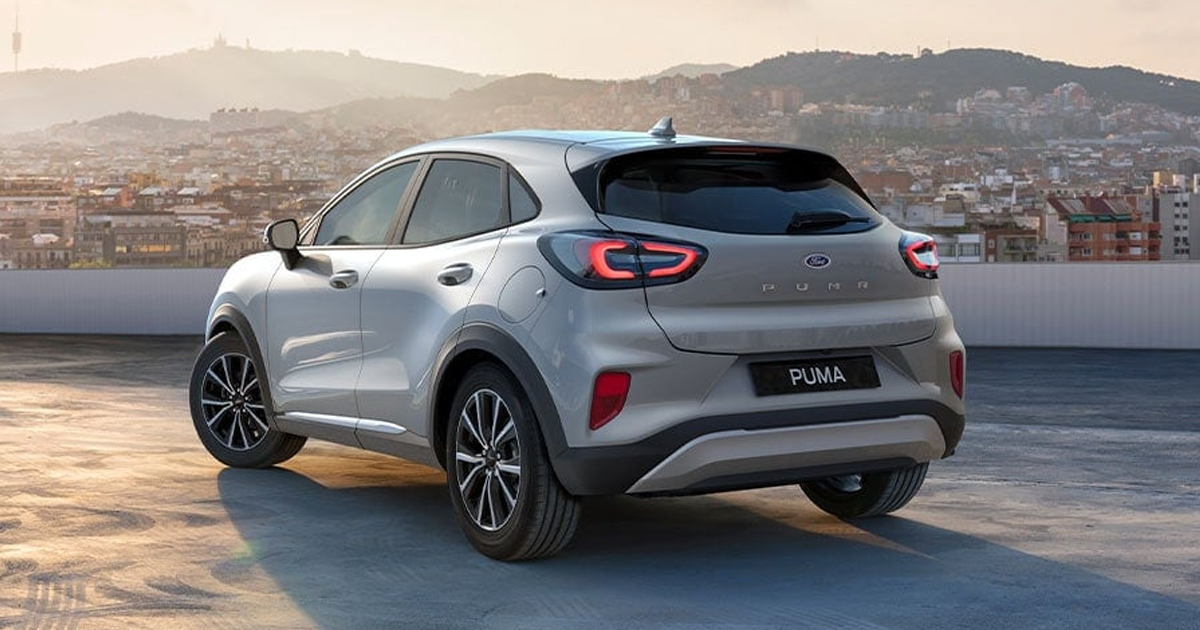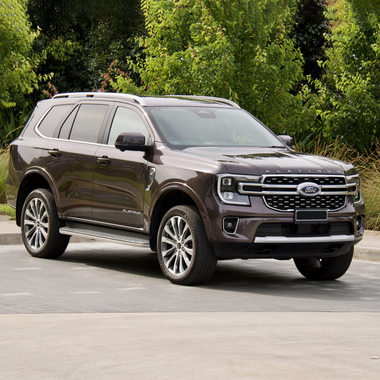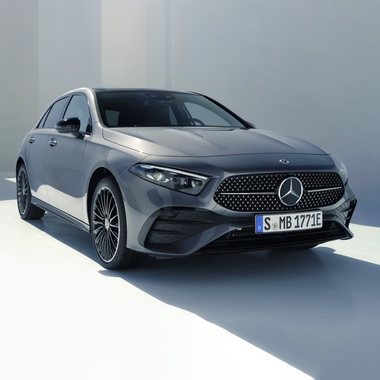In an intriguing re-introduction to the passenger car market, the 2023 Ford Puma is a well-rounded, clever crossover that's bound to sell well.
It’s been a while, but Ford has finally introduced a new model to the local range that isn’t an Everest or Ranger. In recent years, popular models like the EcoSport, Fiesta, Figo and Focus have been discontinued in South Africa leaving a very limited lineup. Now, with the introduction of the Puma compact crossover, it has plugged a significant gap in their offerings. Though it has already been sold for some time in overseas markets, South Africans finally got their first taste of the Puma just as 2023 came to its conclusion – better late than never, right?
We attended the local launch of the model by experiencing a drive from Cape Town to Gauteng. Here’s what we thought and everything you need to know about the newcomer.

The Puma in focus
Kicking things off are the trim levels, and there are only two to choose from: Titanium and ST-Line. Both trims employ the same 1.0-litre three-cylinder EcoBoost engine that has a power output of 92kW and 170Nm of torque, matched to a seven-speed dual-clutch (DCT) automatic transmission. Power is sent to the front wheels only. There are also five selectable drive modes, and what’s cool about the system is that it automatically adjusts the various settings for each mode, including throttle response, steering feel, as well as gear-change behaviour.
The Puma is effectively a replacement for the EcoSport, since production of the latter ceased in India and Romania respectively. Not through any fault of its own, the Puma arrives at a time when all its rivals have been on sale for quite some time and customers are already well acquainted. On the flipside, there are also many Ford fans in the country that have been waiting for the Puma to arrive and will no doubt have put their names down for pre-order when it became available.
If you compare the Puma to its rivals in terms of spec level and pricing, it trumps the Volkswagen Taigo and T-Roc for better value, bested only by the Hyundai Kona N-Line. Equipped as standard is ABS braking with EBD, electronic stability control, hill launch assist, tyre pressure monitoring, auto high beam headlight activation, lane-keeping assist, lane departure warning, road edge detection and pedestrian detection.
Both variants are available with the optional Driver Assistance Pack (which is priced at R21 100) that includes adaptive cruise control with Stop & Go and lane centring, blind spot information system with cross traffic alert, front parking sensors and a rear wide-angle camera, active park assist with perpendicular parking and a driver impairment monitor.
Interior and exterior
As mentioned, the range consists of only two models. Standard on the Titanium are black-machined 17-inch alloy wheels, a rear diffuser and skid plate finished in metallic grey, and gloss black finished window surrounds. On the inside are a leather-trimmed steering wheel, a 6-speaker sound system, an 8-inch touchscreen with Android Auto and Apple CarPlay, wireless charging and LED ambient lighting. The build quality is excellent inside and out with some nice soft touch finishes.
Being the range-topper, the Vignale is a cut above and features black 18-inch machined alloy wheels, sports suspension and a larger roof-spoiler. Customers who want even more style for their car can opt for the ST-Line Styling Pack (R17 300) that comprises of a panoramic roof, tinted glass, a black-painted roof and four-way adjustable front passenger seat functionality.
Other than the ST-Line badging, it also gets a flat-bottomed steering wheel, aluminium pedals and gear selector, a power tailgate, a 12.3-inch digital instrument cluster, B&O Play 10-speaker sound system with subwoofer, electronic temperature control and lumbar seat massage.

FordPass Connect allows drivers access to a range of features like vehicle locator, vehicle status (that checks fuel levels, alarm status, oil life and more), remote door lock unlock and remote start via the FordPass mobile app.
Desert Island Blue, Grey Matter, Frozen White, Fantastic Red and Magnetic are the standard body colour options available. The Puma certainly has charismatic styling cues, most notable of which are the top-mounted, canoe-shaped LED headlights complete with daytime running lights. In the rear, passengers can make use of 456-litres of luggage space that can accommodate two golfing bags standing upright.
The drive
There’s nothing quite like a long drive to get fully accustomed to a car. Ford decided to do things a bit differently this time around with a drive from Cape Town to Johannesburg, also a good opportunity to gauge fuel consumption and overall drive quality in the process. From behind the wheel, the Puma feels like a more compact version of the EcoSport, similarly laid out but better. Everything is nice and compact from a driver functionality perspective, with the climate controls and infotainment screen always within reach.
There were times on the drive where we could literally hear nothing from the engine, as though it had switched off. We were later told that Ford’s cylinder deactivation system automatically switches off one of the engine’s cylinders when pull power is not needed, such as when coasting or cruising. It’s a clever solution for fuel consumption!
Our journey included many bouts of ascending mountain roads and overtaking, and that’s where we wanted to see if the 92kW could torque the talk. The five drive modes – Normal, Eco, Slippery, Sport and Trail – can be flicked through via a button next to the manual handbrake.
We’ve never really been a fan of small capacity three-cylinder engines, but there’s a reason why Ford’s version is an award winner. There’s no chassis reverberation upon start up and, combined with the seven-speed gearbox, there’s no hint of strain under acceleration or at higher-than-normal speed. Interestingly, the Titanium had the softer ride of the two models, though we think the stiffer sports suspension and bigger wheel size in the Vignale were contributing factors. Handling is nimble and the car feels stable even at highway speeds.
Where fuel consumption is concerned, Ford claims a figure of 5.8-litres per 100km, and with the air conditioning on the entire time and doing sections in Sport mode, we managed a return of 6.5-litres which really isn’t bad at all. With a bit more effort and greener driving, that figure will easily drop to the low 6’s.
Pricing and aftersales
Puma Titanium - R569 900
Puma ST-Line Vignale - R613 900
The range comes standard with a four-year/120 000km warranty, four-year/unlimited distance roadside assistance and five-year/unlimited distance corrosion warranty.
If they wish to do so, customers have the option of purchasing service or maintenance plans of up to eight years or 135 000km. The warranty can be extended up to seven years or 200 000km, while the roadside assistance can be extended for an additional one or two years.
In the market for a new or used car? Get it on Gumtree! There are over 50,000 cars listed on Gumtree. Whether you're looking for a small car, family car, vintage car, fancy car, or your next project car; we've got it all! Browse Cars & Bakkies on Gumtree.







